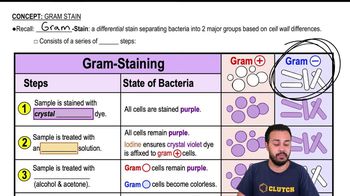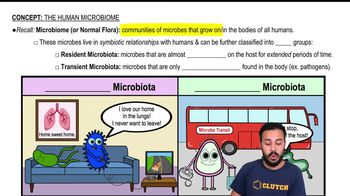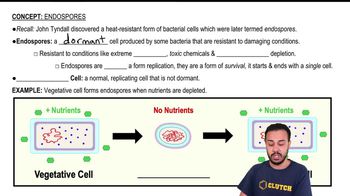Which of the following is not a characteristic of biofilms?
a. antibiotic resistance
b. hydrogel
c. iron deficiency
d. quorum sensing
 Tortora 14th Edition
Tortora 14th Edition Ch. 4 - Functional Anatomy of Prokaryotic and Eukaryotic Cells
Ch. 4 - Functional Anatomy of Prokaryotic and Eukaryotic Cells Problem 11.1a
Problem 11.1a Verified step by step guidance
Verified step by step guidance



Which of the following is not a characteristic of biofilms?
a. antibiotic resistance
b. hydrogel
c. iron deficiency
d. quorum sensing
bacterial culture was in log phase in the following figure. At time , an antibacterial compound was added to the culture. Draw the lines indicating the addition of a bactericidal compound and a bacteriostatic compound. Explain why the viable count does not immediately drop to zero at x. <IMAGE>
The following outline can be used to identify important bacteria. Fill in a representative genus in the space provided.
<IMAGE>
Compare and contrast each of the following:
a. Cyanobacteria and algae
b. Actinomycetes and fungi
c. Bacillus and Lactobacillus
d. Pseudomonas and Escherichia
e. Leptospira and Spirillum
f. Escherichia and Bacteroides
g. Rickettsia and Chlamydia
h. Mycobacterium and Mycoplasma
Which of the following does not belong with the others?
a. Enterobacteriales
b. Lactobacillales
c. Legionellales
d. Pasteurellales
e. Vibrionales
DRAW IT Draw a key to differentiate the following bacteria: cyanobacteria, Cytophaga, Desulfovibrio, Frankia, Hyphomicrobium, methanogens, myxobacteria, Nitrobacter, purple bacteria, Sphaerotilus, and Sulfolobus.